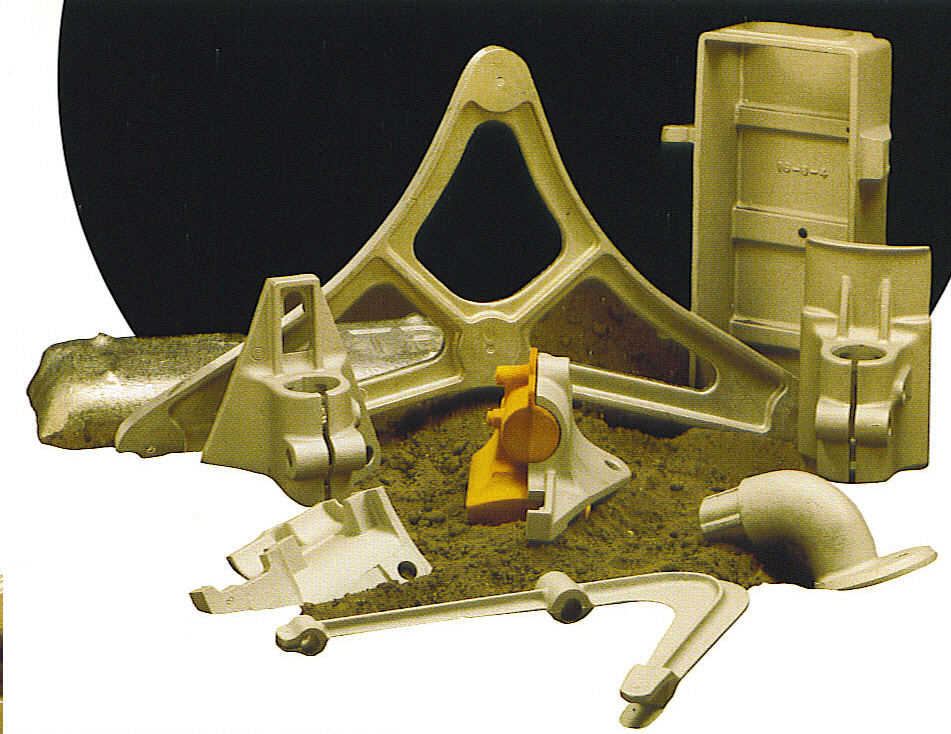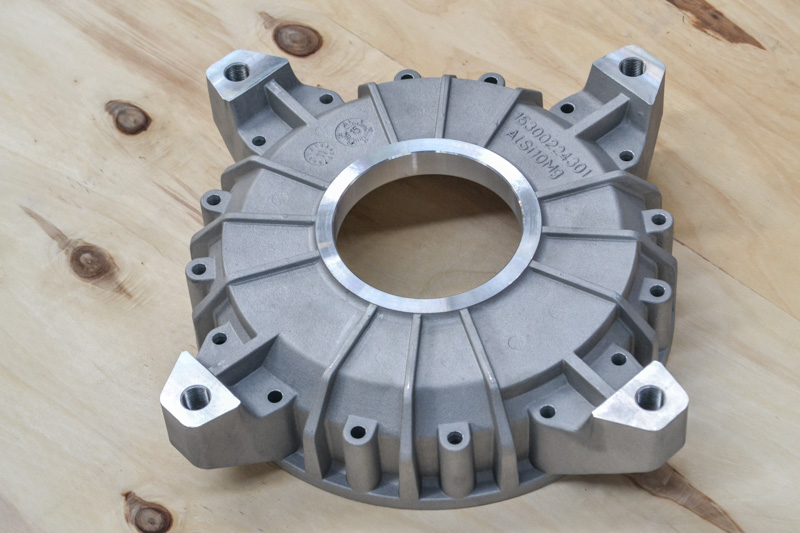How Wisconsin Aluminum Foundry excels in high-quality metal production
How Aluminum Foundry Adds To Innovative Solutions in Steel Manufacture
Aluminum shops considerably affect the landscape of steel fabrication. They adopt innovative spreading methods that enhance accuracy and style versatility. This capability permits the production of durable and light-weight components that satisfy varied market demands. Moreover, the integration of automation and sustainable techniques sets a standard for efficiency. As these factories advance, they question about the future of manufacturing and the duty of development in forming the sector.
The Role of Aluminum Foundries in Modern Production
Aluminum shops play a vital duty in modern manufacturing, adding considerably to various markets, consisting of auto, aerospace, and consumer goods. These facilities focus on the melting and spreading of light weight aluminum, transforming resources into high-grade components that meet strict market criteria. The light-weight yet solid properties of Aluminum make it an ideal choice for producers aiming to improve performance while minimizing weight, especially in the vehicle field, where gas performance is extremely important.
Furthermore, Aluminum foundries utilize innovative processes to produce intricate forms and layouts that provide to certain market needs. By leveraging advanced innovations such as computer-aided layout and simulation, these foundries can optimize their production procedures and boost product usage. This not only enhances the top quality of the end products but additionally decreases waste, adding to more sustainable production methods. Eventually, the contributions of Aluminum shops are vital for driving advancement and efficiency throughout several industries.
Advanced Casting Techniques Changing Metal Manufacture
Advanced spreading techniques are changing the area of metal manufacture, especially through accuracy casting approaches that improve precision and minimize waste. Innovative alloy growths are also playing an essential function, enabling tailored properties and enhanced performance in different applications. Together, these improvements are setting new criteria in effectiveness and quality within Aluminum shops.
Accuracy Spreading Approaches
As the demand for top quality components in different sectors remains to climb, precision casting approaches have become a transformative pressure in metal construction. These strategies, including investment spreading, lost foam casting, and pass away spreading, allow for complex geometries and limited tolerances that conventional techniques often have a hard time to attain. By utilizing advanced materials and modern technologies, accuracy casting reduces waste and improves performance, enabling manufacturers to create complicated components with reduced lead times. Additionally, these techniques supply premium surface finishes and mechanical residential properties, making them excellent for industries such as aerospace, automobile, and medical gadgets. As makers progressively take on accuracy spreading, the capability to satisfy certain layout needs while keeping cost-effectiveness comes to be a crucial benefit in today's open market.
Cutting-edge Alloy Advancements
Ingenious alloy advancements are reshaping the landscape of metal fabrication, particularly within the domain of accuracy spreading. Developments in product science have led to the production of specialized Aluminum alloys that boost resistance, longevity, and stamina to rust. These novel alloys make it possible for factories to create detailed components with enhanced mechanical properties, catering to varied sectors such as aerospace, automobile, and electronics. The incorporation of advanced spreading techniques, consisting of die casting and sand spreading, additional optimizes the usage of these materials, permitting intricate geometries and lowered waste. As an outcome, producers are much better outfitted to satisfy stringent efficiency standards while lessening environmental effect. Ultimately, these ingenious alloys are leading the way for a brand-new age of performance and sustainability in metal manufacture.
Durable and lightweight: The Benefits of Aluminum Components
Aluminum elements supply significant benefits in numerous applications due to their light-weight nature and durability. This mix adds to boosted fuel effectiveness, specifically in the automotive and aerospace sectors. Additionally, aluminum's intrinsic deterioration resistance even more prolongs the life-span of items, making it a preferred choice in lots of steel fabrication processes.
Improved Gas Performance
While traditional materials have long been the requirement in numerous sectors, the change towards Aluminum components is transforming the landscape of metal construction, specifically in connection with enhanced fuel efficiency. Aluminum's lightweight nature notably decreases the general weight of lorries and equipment, permitting for improved performance and reduced power consumption. This reduction in weight translates directly to reduced gas intake, making Aluminum an eye-catching alternative for manufacturers intending to fulfill rigorous ecological laws. On top of that, light weight aluminum's longevity warranties that parts preserve their stability in time, adding to long-term performance. As sectors progressively prioritize sustainability, the adoption of Aluminum parts comes to be a critical option, lining up operational objectives with ecological responsibility while enhancing gas effectiveness in various applications.
Deterioration Resistance Conveniences
One of the standout features of Aluminum parts is their phenomenal rust resistance, which significantly enhances the durability and reliability of numerous applications. This building is especially beneficial in rough atmospheres, such as industrial and aquatic settings, where direct exposure to moisture and chemicals can bring about considerable destruction in other steels. Unlike steel, Aluminum naturally creates a protective oxide layer that works as a barrier versus environmental aspects, minimizing the threat of rust and rust. As an outcome, Aluminum elements call for less upkeep and have a longer life span, making them an affordable selection for manufacturers. This inherent toughness not only contributes to the total performance of products but likewise supports sustainability initiatives by decreasing the demand for frequent replacements.
Advancements in Design and Engineering With Aluminum Foundries
As innovations in Aluminum Foundry technology proceed to improve the landscape of steel fabrication, ingenious layout and design solutions are emerging to satisfy the needs of varied industries. The flexibility of Aluminum enables detailed layouts that were formerly unattainable with traditional materials. Factories are leveraging computer-aided style (CAD) software program and simulation devices to maximize the layout process, enabling engineers to create lightweight yet robust components tailored to particular applications.
Additionally, the capability to include innovative alloying strategies allows the modification of Aluminum properties, enhancing strength and resilience. This flexibility promotes imagination in product growth, permitting business to try out new forms and frameworks that enhance performance while reducing weight. Joint initiatives between shops and designers facilitate quick prototyping, causing shorter project timelines and raised general efficiency. These innovations not just improve product efficiency but also drive sustainability by reducing product waste throughout the construction process.
Enhancing Performance With State-Of-The-Art Technology
Advancements in modern technology are changing the performance of Aluminum shops, simplifying processes from style to manufacturing. Automation plays a crucial role, with robot systems enhancing the rate and precision of tasks such as read more molding, putting, and completing. These automated options lessen human mistake and reduce labor prices, while also enhancing outcome consistency.
Additionally, the integration of advanced software application for computer-aided layout (CAD) and simulation permits quick prototyping and screening, accelerating the change from concept to production. Shops are utilizing real-time data analytics to keep track of operations, making sure peak efficiency and decreasing downtime.
Additionally, 3D printing technology is being taken on for creating complicated mold and mildews and elements, lowering product waste and lead times. The mix of these cutting-edge modern technologies not only increases performance however additionally boosts the high quality of Aluminum items, placing factories at the leading edge of advancement in steel manufacture.
Sustainable Practices in Aluminum Foundries
A growing variety of Aluminum shops are embracing lasting methods to lower their environmental influence and promote source effectiveness. Wisconsin Aluminum Foundry. These factories are increasingly applying reusing programs, where scrap Aluminum is accumulated and reprocessed, greatly decreasing waste. Additionally, energy-efficient technologies, such as electrical furnaces and advanced insulation materials, are being utilized to lower energy usage during the melting process
Water conservation methods are likewise gaining grip, with many factories reusing water in cooling down systems to lower overall usage. Moreover, the adoption of green coatings and additives reduces damaging emissions without jeopardizing item high quality.
Future Fads in Aluminum Spreading and Metalworking
Progressively, the future of Aluminum casting and metalworking is being shaped by technical technologies and progressing sector criteria. Developments in automation and robotics are streamlining procedures, boosting accuracy, and minimizing labor prices. The fostering of additive manufacturing strategies, such as 3D printing, is changing standard spreading approaches, permitting intricate geometries and minimized product waste.
In addition, the combination of synthetic intelligence and information analytics is making it possible for real-time monitoring and anticipating maintenance, which maximizes manufacturing efficiency. Sustainability remains a core focus, with business purchasing environmentally friendly techniques, consisting of the recycling of Aluminum scrap and the usage of eco-friendly energy sources in manufacturing.
As the demand for light-weight, durable products in different sectors increases, Aluminum factories need to adapt by establishing innovative alloys and enhancing casting methods. These trends jointly indicate a future where Aluminum casting and metalworking are much more effective, sustainable, and responsive to market requirements.

Often Asked Questions
What Sorts Of Aluminum Alloys Are Typically Utilized in Factories?
Typically used Aluminum alloys in shops consist of 2xxx series (copper), 3xxx collection (manganese), 4xxx collection (silicon), 5xxx collection (magnesium), and 6xxx series (magnesium and silicon), each offering unique residential properties ideal for numerous applications.
Exactly How Does Aluminum Casting Contrast to Other Steel Manufacture Techniques?
Aluminum casting deals advantages such as reduced production prices and complicated shapes contrasted to typical construction techniques. It offers outstanding dimensional accuracy and surface finish, making it a preferred selection for many sectors over alternatives like machining or welding.
What Security Actions Are Implemented in Aluminum Foundries?
Aluminum factories execute numerous precaution, consisting of personal protective tools, air flow systems, regular safety and security training, risk analyses, and emergency situation procedures to secure workers from dangers related to liquified steel, heat, and possible chemical direct exposure. Aluminum Foundry.
Exactly How Can Firms Locate Reputable Aluminum Foundry Allies?
Business can identify trusted Aluminum Foundry partners by reviewing sector track record, assessing client endorsements, assessing top quality accreditations, taking into consideration production abilities, and carrying out site check outs to guarantee placement with their specific demands and requirements.

What Is the Normal Preparation for Aluminum Casting Projects?
The typical lead time for Aluminum spreading projects varies from two to eight weeks, relying on factors such as style complexity, manufacturing quantity, and the factory's capacity to satisfy specific project requirements and timelines.
Aluminum foundries play a crucial function in modern production, contributing significantly to numerous sectors, including vehicle, aerospace, and customer products. As innovations in Aluminum Foundry innovation proceed to improve the landscape of metal construction, cutting-edge style and engineering options are arising to satisfy the needs of diverse industries. Advancements in modern technology are reinventing the performance of Aluminum factories, improving processes from style to production (Aluminum Castings). An expanding number of Aluminum factories are adopting sustainable techniques to minimize their ecological effect and advertise source efficiency. As the need for lightweight, sturdy materials in different sectors increases, Aluminum foundries must adjust by establishing ingenious alloys and improving casting methods